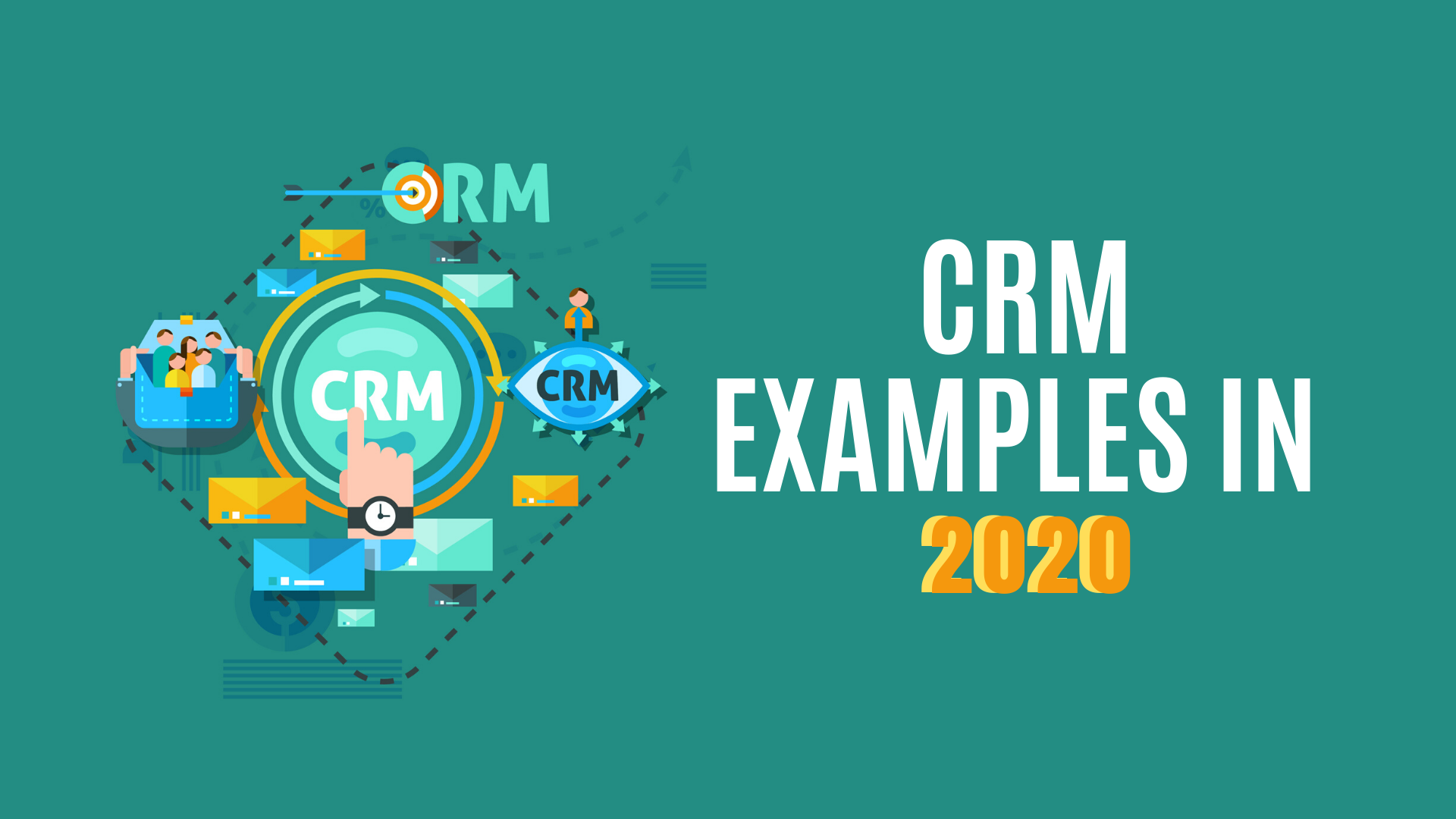In a previous article, we looked at the three main types of CRMs: operational, analytical, and collaborative. But while these are the broad categories that most CRMs fall into, we can get even more specific than that.
After all, the tools that an inbound marketing team needs in a CRM will differ from those used by an outbound sales team -- even if there is some overlap.
In this article, we’ll take a closer look at five different kinds of CRM, as well as ideas on when to use them and some real-world examples.
What is a CRM?
First, what is a CRM? A CRM refers to customer relationship management software, a tool that can be used to keep track of your team’s interactions with customers across a wide range of communication channels, including email and social media.

Many CRMs are cloud-based, and can be integrated with apps you already use, such as calendars and email clients, social media platforms, sales dialers, and more.
A comprehensive CRM can be used throughout the entire customer lifecycle, from their first engagement with your website to maintaining accounts with long-term clients.
But it can also be used for more specific situations, such as managing your field sales team or making cold calls from an in-app dialer.
No matter what type of customers your team interacts with, a modern CRM will use the latest technology to automatically update customer profiles, remind you when to follow up, and provide you with consistent user profiles across all of your teams.
You can also use analytical tools to crunch the numbers and make sales forecasts or deliver automated reports to your team.
A CRM can help you improve customer satisfaction, create a streamlined workflow for your sales reps, and ultimately increase your bottom line.
According to Capterra, around 65% of companies start using a CRM during their first five years of business to improve customer retention, cross-selling, and more.
Now that we have a broad overview of some of the things that a CRM can do, let’s take a look at some of the specific types of CRMs and their unique features.
Inbound CRM
Inbound marketing refers to marketing strategies in which the customer comes to you -- in contrast to cold calling and other outbound marketing techniques.
Companies that use inbound marketing rely on SEO, social media, newsletters, blogs, and more to attract potential customers to their website and sales channels.
Inbound marketing materials are designed to be helpful rather than disruptive, providing useful advice and resources to customers as a way to build familiarity and trust.
Why would you need to use a CRM to manage inbound marketing? Well, once you’ve attracted customers to your website, it’s important to keep them engaged.
With a CRM, you can collect email addresses and phone numbers that visitors to your website submit via a webform. Your sales team can engage with them on-the-spot with a live chat or callback, or follow up with an email or survey.
You can segment your contacts based on which pages they visited or touch points they interacted with. Send them newsletters or SMS messages at just the right time to draw them into the next stage of your sales funnel.
Your CRM will keep track of which communication channel each prospect prefers, and make sure that you don’t miss any inquiries or social media mentions.
As more and more customers expect to engage with brands on social media before they make a purchase, it’s all the more important to meet them where they’re at.
An inbound CRM can help you capture leads before they slip away, while keeping your contacts organized so they don’t overwhelm your sales team.
Use if:
Use an inbound CRM if your company relies on social media and content marketing to attract new customers. Many SaaS companies use inbound marketing because it’s a natural fit for products that offer a solution to a business or technical problem.
Your content marketing strategies can include blog posts, YouTube videos, or even free online courses that are related to the problem your product solves.
Customers who find the content useful are likely to sign up for your email newsletter or pay for premium products. You can use your CRM to keep track of their initial inquiries and remind your sales team to follow up and encourage a purchase.
Example:
Nutshell is an inbound CRM that’s designed to be used with inbound marketing tools. For example, you can integrate it with MailChimp, Constant Contact, and other email marketing tools to nurture your prospects.
While it’s capable of handling other activities too, its design places a strong emphasis on inbound marketing strategies meant to help you grow your customer base.

General CRM
A general CRM is a multi-purpose CRM that can be used for a range of customer-facing activities, but has less of a focus on specific sales or marketing techniques.
Most CRMs fall into this category, offering standard tools that can be used by small and large businesses alike. Some of them may have upgrade options or add-ons to provide you with more specialized tools for specific industries or businesses.
Some of the most well-known CRMs, such as Salesforce, fall into this category. They’re comprehensive and adaptable, but can be overwhelming for first-time users.
A general CRM may have components that you never use because they aren’t relevant to your business or industry.
At minimum, a general CRM will feature customer profiles with automatic data entry and built-in sales tools, such as marketing automation.
It may also offer e-commerce tools such as Shopify integrations.
Because a general CRM is designed to be good at everything, it may be slower to adapt to new business trends than a more specialized CRM.
Think of it as being great for horizontal use between teams, but less suited for doing a deep dive into a particular vertical without using additional software.
Use if:
Choose a general CRM for a large business with multiple departments that need access to the same customer profiles. A CRM with general capabilities can meet the needs of several teams, while still allowing for some customization within each department.
A general CRM is also great for businesses that are scaling rapidly or aren’t sure where they’ll be in 5 years. Unlike specialized CRMs, which are designed for a single industry or sales techniques, a general CRM can be adapted to new uses over time.
Example:
Salesforce is one of the most well-known general CRMs. They offer a full suite of sales automation software, including AI sales tools and custom app development.
Lately, they’ve begun offer vertical integrations as part of their Consumer Goods Cloud, which are designed for specific industries, such as healthcare or manufacturing.
Businesses can use these integrations to build more specialized tools on the back of the general CRM software. Prices vary depending on your specific use case.
Fully Integrated CRM
A fully-integrated CRM might sound similar to a general CRM, but in fact the two types of CRM are used very differently. While general CRMs may be used by multiple teams, they still tend to be used by each department individually.
A fully-integrated CRM, on the other hand, is used by teams that work closely together. For example, a fully-integrated CRM helps your inbound sales team to know what your support team is up to, and vice-versa.
After all, how do you draw the line between purchase inquires and support requests? A prospective customer might use the same social media channel to ask about a product as they do to follow-up with your support team when they have a technical issue.
An integrated CRM will route the request to the right department, while also allowing your sales or support rep to view their previous tickets and purchase history.
In the past, companies would rely on separate apps to handle their marketing, sales, and customer support activities. With an integrated CRM, you can bring it all into one place, using built-in email, phone, and chat tools to communicate with customers.
An integrated CRM provides context and reduces confusion when multiple sales or support reps interact with the same person by providing a single customer view.
Use if:
Use an integrated CRM if your sales, marketing, and support teams are closely aligned. Instead of gathering support tickets, purchase history, and social media engagements in different silos, you can keep track of them all in the same CRM software.
SaaS businesses that rely on repeat customers can use an integrated CRM to keep their customers engaged and improve customer satisfaction.
Example:
Hubspot is a popular CRM that offers integrations for multiple departments, including Marketing, Sales, and Service Hubs. You can also integrate it with Gmail and Outlook for seamless email integrations between all of your users.
While basic functionality is free, Professional and Enterprise options start at $800 per month, depending on the number of contacts.
Operational CRM
While fully-integrated CRMs focus on strong customer relationships, operational CRMs are designed to streamline this process using automation.
You can think of operational CRMs as being slightly more systems-driven. For example, an operational CRM can use lead scoring to rank your leads and let a sales rep know when it’s time to follow up and encourage them to make a purchase.
You can also use an operational CRM to send automated SMS messages and emails, or provide a built-in scheduler for prospects to schedule a meeting or callback.
From lead generation to closing sales, operational CRMs make it easy to automate the most time-consuming steps of the sales process and create an efficient pipeline.
On the customer support end, an operational CRM can provide automated chat support, a self-service knowledge base, and more.
The downside to an operational CRM is that it can lead to a less personalized customer experience. It’s important to make sure that your CRM doesn’t automate your sales reps out of the way entirely, but simply makes it easier for them to do their jobs.
Use if:
Use an operational CRM if you want to improve the efficiency of your sales team. You can use lead prioritization to spend less time calling up leads who aren’t ready to buy, and built-in scheduling tools to stop toggling back and forth between calendars.
Operational CRMs are also great for re-engagement campaigns, onboarding, upselling, and more. Plus, you can use automated reporting tools to provide real-time updates to your sales team on a regular basis.
Example:
OnCourse is an operational CRM that also includes some elements of an integrated CRM. From automatic data entry to customizable reporting tools, OnCourse is made with efficiency in mind and can help you create a more effective sales pipeline.
It also integrates with your calendar, email client, and other sales software that you’re currently using, making it easy to transition to a more comprehensive platform.

Sales CRM
Finally, there are sales CRMs, which essentially stick to the basics and focus primarily on sales. You won’t find as many options for integrations or customer support, but not every team needs all of the bells and whistles.
For example, you can choose a sales CRM with a sales dialer to help your team place outbound calls, or an app that tracks your sales reps when they’re out in the field.
A sales CRM uses metrics like deal value and deal probability to score leads and help your reps prioritize the deals that will bring in the most revenue.
You can also track the performance of your sales team using automated reporting tools and other built-in analytics.
Use if:
Sales CRMs are great for outside sales teams, or for inside sales teams that don’t rely on inbound marketing. If you don’t have an extensive marketing or support team, then having a single customer view is less important to your bottom line.
Use a sales CRM to run a highly-focuses sales team that won’t be distracted by other CRM components that they don’t need and aren’t designed for them.
Example:
Pipedrive is a straightforward sales CRM that’s designed for the everyday sales rep. It also has mobile app integrations, making it easy for your sales reps to use on-the-go.
It won’t be as useful if your business grows and you expand your support and marketing teams, but it’s an efficient CRM for lead generation and deal management.
Which CRM should you pick?
Choosing the right CRM comes down to understanding what’s best for your business at any given time. Although we’ve shown you a few different scenarios, you might find that your company falls under several different categories or even moves between them.
That’s why it’s important to choose an adaptable CRM that you don’t need to replace if you decide to shift focus or introduce a new department.
While a single-focus CRM like a sales CRM might be suitable for the time being, in the long run, a fully-integrated or operational CRM is likely to be more advantageous.
Some operational CRMs, like OnCourse, are great for multiple scenarios, because they include some of the most important sales tools, like an in-app sales dialer, and can be customized to meet the needs of other departments as well.
To find out if OnCourse is right for your team, schedule a demo today to see how this all-in-one CRM can boost your productivity and help you reach your sales goals!

